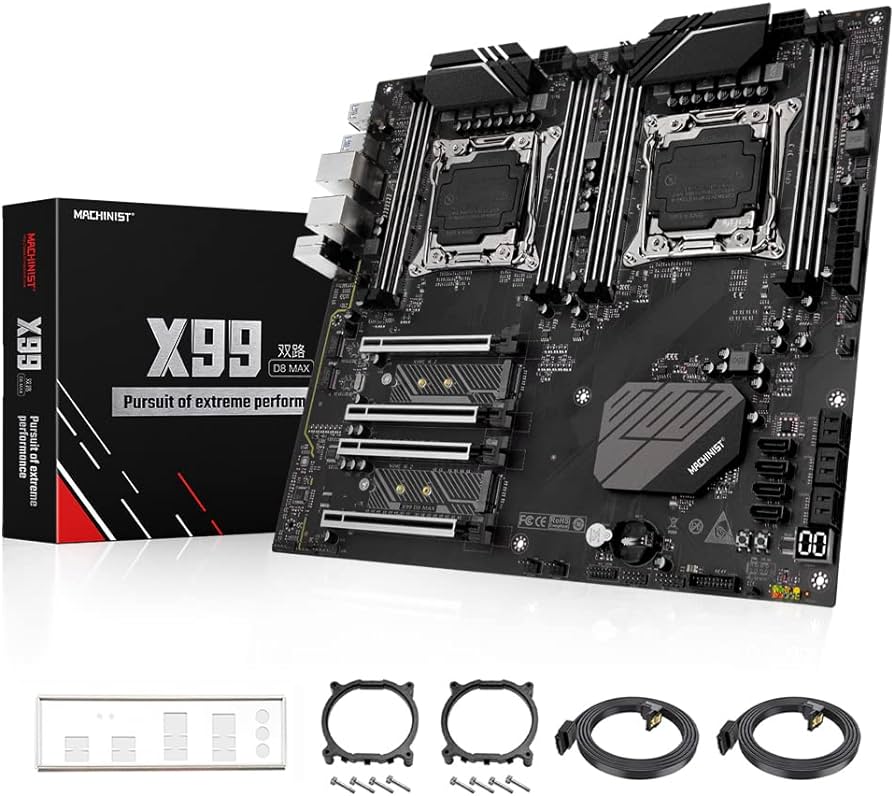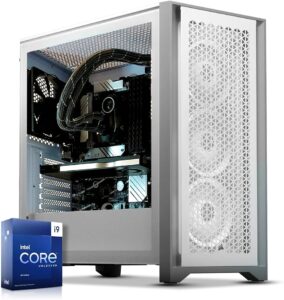Yes, a computer can have more than one CPU. These multi-CPU setups are common in servers and high-performance workstations.
Computers with multiple CPUs, also known as multi-core processors, are becoming increasingly popular for their enhanced performance and multitasking capabilities. This configuration lets a computer manage numerous tasks efficiently and provides a boost for complex computational demands. Particularly in professional environments where power and precision are paramount, such as in data centers or for video editing, having several CPUs allows for robust parallel processing.
Enterprises seeking to reduce processing times and improve system responsiveness often turn to multi-CPU architectures. While the average consumer may not require such advanced setups, the trend towards multi-CPU systems reflects a broader move towards faster and more capable computing across various industries.
The Evolution Of Computer Cpus
The heart of any computer, the Central Processing Unit (CPU), has undergone a remarkable evolution. Early computers relied on singular, simple CPUs to perform tasks. But today’s demands could not be met with that same technology. Understanding how CPUs transformed from single to multi-core designs provides insight into our current computing capabilities and the opportunities that await us.
From Single To Multiple: A Historical Perspective
Multi-processor systems opened the door to advanced computing. Initially, computers could perform only one operation at a time. The concept of parallel processing emerged, allowing multiple processes to occur simultaneously. It led to the development of multiple CPUs within a single computer. Workstations and servers benefited the most, showing marked improvements in efficiency and performance.
- Early computing was driven by single-core, single-thread CPUs.
- Machines with dual CPUs hit the market, changing the game for power users.
- Multi-CPU systems became a staple for high-performance needs.
Technological Advancements Leading To Multi-core Cpus
Technological breakthroughs led to CPUs with multiple cores on one chip. This leap meant better multitasking, less heat production, and greater energy efficiency. Multi-core technology represents a pivotal point in CPU design, letting individual cores handle different tasks. This not only sped up computing times but also allowed for sleeker, more portable devices without sacrificing power.
| Year | Advancement |
|---|---|
| 2000s | Dual-core CPUs introduced, kicking off the multi-core era. |
| Present | CPUs with 64+ cores available for extreme processing capabilities. |
Multi-core processors are now standard, with innovations continuing to push the limits. CPUs with an ever-increasing number of cores are emerging, tackling complex, data-heavy tasks with ease.

Credit: www.soundonsound.com
Understanding Multi-core Processors
Imagine your computer as a busy office. Now, picture it with more than one brain to handle tasks. That’s what having more CPUs or multi-core processors is like. These powerful chips make computers faster and smarter. Let’s dive into how they work.
The Architecture Of Dual-core Processors
A dual-core processor has two cores in one chip. Think of it as two brains. Each brain can work on different tasks. This means the computer can handle more at once. It’s like having two workers in the same office.
| Core | Tasks Handled at Once |
|---|---|
| Core 1 | Task A |
| Core 2 | Task B |
These processors also share some resources like memory and the data path to the CPU. This makes them work together smoothly.
How Multi-core Cpus Differ From Single-core Units
Single-core CPUs are like solo workers. They can do one thing at a time. Multi-core CPUs, on the other hand, split up tasks. They’re a team of workers, making them more efficient. Here’s a list of their benefits:
- Faster performance because of shared workload
- Better multitasking abilities
- Energy savings since they’re often more efficient than having multiple separate CPUs
- Less heat production as workload is divided
Each core also has its own cache. This is a small memory bank that speeds up operations. Because cores can access their own cache, they don’t have to wait on each other.
There’s more to multi-core processors. They often come with technologies like hyper-threading. This creates virtual cores to handle even more tasks. This flexibility helps your computer stay fast, even when it’s very busy.
The Benefits Of Dual-core Processing
In a digital world that demands speed and efficiency, dual-core processing takes center stage. Imagine two brains working in unison within your computer. This is what dual-core technology offers. The leap from single to dual-core is not just about adding more power; it’s about transforming how computers perform tasks. Let’s dive into the specific benefits.
Enhanced Performance And Efficiency
Dual-core processors skyrocket your computer’s ability to handle tasks. Each core works simultaneously, leading to smoother operation. Consider a scenario where you’re editing a video. One core could render your effects while the other manages the rest of the system, leading to faster processing times. Efficiency also sees a major bump; jobs once bottlenecked by single-core limitations now flow freely.
Consider these key points where dual-core processors shine:
- Quick application launches with reduced load times.
- Enhanced computing experiences, from browsing to gaming.
- Less waiting, more doing—improved responsiveness throughout.
- Energy consumption optimization for better battery life in laptops.
Multi-tasking And Parallel Computing Advantages
Multi-tasking becomes a breeze with dual-cores. Run multiple applications—no sweat. In this advanced computing era, parallel computing is pivotal. Dual-cores divide and conquer tasks smartly, providing a seamless multi-tasking environment.
Here’s how this plays out in everyday use:
| Task 1 | Task 2 | Result |
|---|---|---|
| Stream a video | Compile code | No interference, smooth playback and compiling |
| Download files | Run a virus scan | Both completed efficiently without slowing down |
Ultimately, dual-core CPUs redefine computer multitasking. Such flexibility is perfect for users demanding peak performance without hiccups. From graphics designers to data analysts, the parallel processing capabilities of dual-core systems are game-changers.
Applications And Uses Of Multi-core Cpus
Multi-core CPUs are like a team of workers. They help computers do many tasks at once. Think of it as more hands on deck. This means faster and better performance, especially for tough jobs. Such CPUs find use in a variety of applications.
From Gaming To Scientific Research: Where Multi-cores Shine
Multi-core processors can make computers run games with stunning graphics. They also help researchers solve big scientific puzzles. Faster data analysis and 3D models in research become easier.
- Professional editing software runs smoother.
- 3D rendering for architects and animators speeds up.
- In scientific simulations, tasks are done quickly.
- Gamers enjoy high frame rates and realistic experiences.
Impact On Software Development For Dual-core Systems
Software developers now write code for dual-core systems differently. They create programs that split tasks across cores. This makes the software run better.
| Task Type | Benefits of Multi-Core |
|---|---|
| Parallel Processing | Faster completion |
| User Experience | Smooth, without lag |
| Complex Calculations | Done in less time |
Web browsers open lots of tabs without slowing down. Video games load faster and look better. Business applications handle big data sets without a hitch. All thanks to multiple cores.
The Future Of Cpu Design
Central Processing Unit (CPU) design is constantly evolving. Advances in technology allow for multiple CPUs in one computer. This trend paves the way for improved performance and faster processing. As we look to the future, CPUs are becoming more sophisticated, with an increase in core counts. The focus is on enhancing efficiency and computing power. The future of CPU design seems limitless – with solutions aiming to meet the high demands of modern software and technology.
Trends In Multi-core Technology
The multi-core revolution shapes the future. Today’s CPUs boast an impressive number of cores. More cores mean computers can handle multiple tasks at once. This leap in design offers significant speed and reliability improvements.
- Energy Efficiency: Newer multi-core CPUs are more power-efficient.
- Parallel Processing: Multitasking is smoother due to multiple cores working together.
- Specialized Cores: Some cores are now designed for specific tasks, boosting performance.
The Role Of Dual-core Cpus In Emerging Technologies
Dual-core CPUs are vital in new tech. They offer a balance of performance and power consumption. Emerging technologies like smart devices and wearables benefit from dual-core designs.
| Technology | Benefit from Dual-Core |
|---|---|
| Smartphones | Faster operations with lower battery drain |
| Wearables | Compact size with efficient processing |
| Smart Home Devices | Quick responses with minimal power use |
Emerging trends suggest a future where dual-core CPUs power even more intelligent technologies.

Credit: en.wikipedia.org
Credit: www.quora.com
Frequently Asked Questions Of Can A Computer Have More Than One Cpu
Can A Computer Operate With Dual Cpus?
Yes, a computer can operate with dual CPUs. This setup is known as dual-processor or multiprocessor configuration. It boosts performance by handling multiple tasks simultaneously. It’s common in servers and high-end workstations.
What Is The Advantage Of Multiple Cpus In A Pc?
Multiple CPUs in a PC allow for improved multitasking, faster processing, and more stability under heavy workloads. They are especially beneficial for tasks like 3D rendering, complex calculations, and handling large databases.
Are Dual Cpu Setups Common In Home Computers?
No, dual CPU setups are not common in home computers. They are typically reserved for servers and professional workstations. Most consumer applications and games do not require or utilize dual CPUs efficiently.
How Do Dual Cpus Improve Computer Performance?
Dual CPUs improve computer performance by enabling parallel processing, which results in faster task execution and better utilization of computing resources. This is particularly effective for software designed for multiprocessing.
Conclusion
As we’ve seen, computers can indeed support multiple CPUs, enhancing performance significantly. This setup is key for demanding tasks that require heavy data processing. Whether for advanced gaming, intricate simulations, or data centers, multi-CPU systems offer a robust solution. Remember, compatibility and system design are crucial to harness this power effectively.



